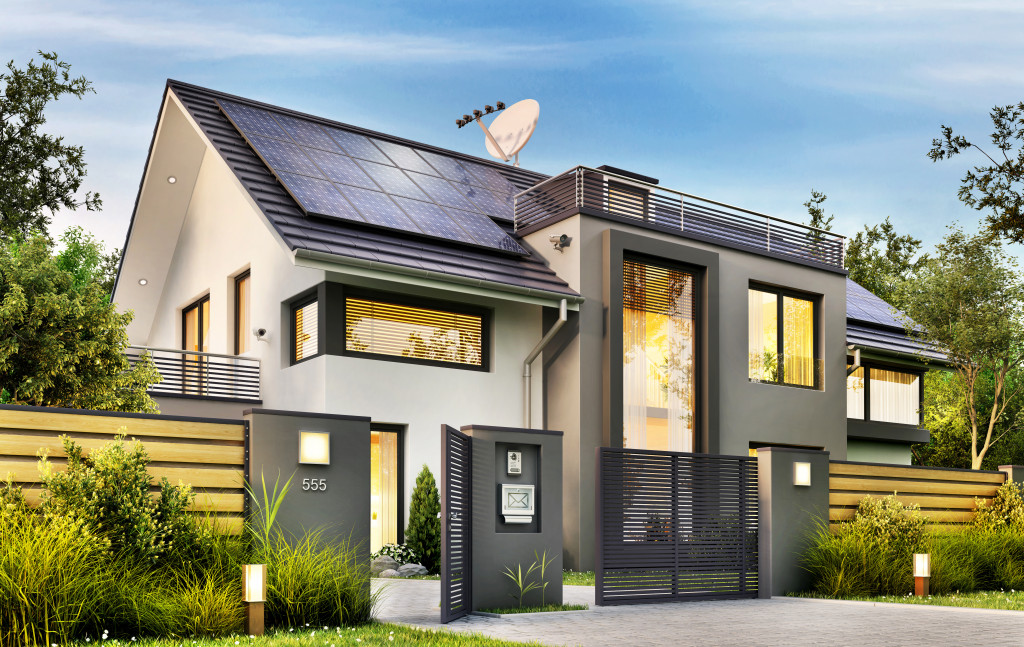Sustainability is no longer just a catchword. Climate change is impacting the world in unprecedented ways. In the United States, the National Centers for Environmental Information (NCEI) under the National Oceanic and Atmospheric Administration (NOAA) reported that there were 20 disaster events in 2021 that left a total of 688 deaths. The U.S. was battered by 11 terrible storms, four tropical cyclones, two floods, a winter storm, a drought, and wildfires. According to PBS News Hour, each event caused billions of losses with a total of $145 billion. Almost a third of the American population was directly affected by such disasters since 2019.
The U.S. government has committed to sustainability goals along with most countries of the world. The common aim is to achieve net-zero emissions of dangerous greenhouse gasses by 2050. To accomplish that, every American must do their part. Everyone must contribute to the effort to mitigate climate change.

Retrofitting for Sustainability
A study published in the Proceedings of the National Academy of Sciences of the United States of America (PNAS) in July 2020 shows that about 20 percent of the U.S. greenhouse gas emissions come from the cooling, heating, and powering of homes. There is, therefore, much that homeowners could do to lower this.
According to the study, the greatest intervention that households can do is to retrofit their homes to reduce their use of energy and fossil fuels. These must be the priority projects for home improvement, over aesthetic issues. Investing in these improvements will not only help the planet but will also lower the energy bill of the household. The projects will pay for themselves in the long run. These improvements will also increase the property’s value, especially as sustainable housing becomes more and more in demand.
Air Sealing and Insulation
One of the most basic ways to cut down energy use, whether for heating or cooling, is to ensure that the house is properly air-sealed. This prevents cold air from seeping in and warm air from leaking out in winter, and the reverse in summer. It, therefore, keeps the home interior warm in the winter and cool in the summer, decreasing the load on the heating and cooling systems.
Air sealing involves caulking, weatherstripping, or pliable gaskets around exterior doors and windows and in the joints between the walls and the ceiling and between baseboards and the floor. Also, wall, ceiling, and floor openings for electrical wiring, ducting, and plumbing need sealing. Wall outlets and switch plates need to have foam gaskets installed behind them. Fire-resistant sealing materials are used for furnaces, fireplace chimneys, and gas-fired water heater vents. When the fireplace is not in use, its flue damper must close tightly.
Proper insulation is still needed in addition to air sealing. Low-emissivity windowpanes reduce indoor heat by reflecting sunlight in summer. Roofing coated with special reflective paint can also reduce indoor heat in the same manner. The problem is that they can also block the sun’s heat from naturally warming the home in winter. In December 2021, Science Journal published research from Berkeley Lab on the development of a material that can be stuck on to existing roofs to provide cooling in summer and heating in winter, resulting in savings of 10 percent in electricity bills. Once this becomes available commercially, the public will benefit much. Since it is a stick-on product, roof replacement will not be necessary.
The government’s Energy Star program certifies various types of home insulation, including fiber, rigid fibrous, blanket batts, rolls, foam board, rigid board, loose-fill, blown-in, foamed-in place, and spray foam. Certified products are required to have clear installation instructions for safety and best performance. For instance, the use of shields can prevent spray foam overspray.
Sustainable Power Sources
Also, under the Energy Star program, homeowners who install renewable power sources can get tax credits up to December 31, 2023. This is retroactive, as well. Covered are solar panels, solar water heaters, geothermal heat pumps, small residential wind turbines, residential fuel cells, and biomass fuel stoves. They must be at par with the Energy Star standards when they were procured.
The tax credit is 30 percent of the cost for those installed and used by December 31, 2019; 26 percent for those installed and used from January 1, 2020 to December 31, 2022; and 22 percent for those installed and used from January 1 to December 31, 2023. However, the tax credit starts at 26 percent for biomass fuel stoves for those installed and used from January 1, 2021 to December 31, 2022. There is a tax credit cap of $500 for every half kilowatt of capacity for fuel cells.
Greening Up
Homeowners looking for their next home improvement project can tick off these changes one by one. It will be very satisfying for them to know that their home is helping save the planet.


